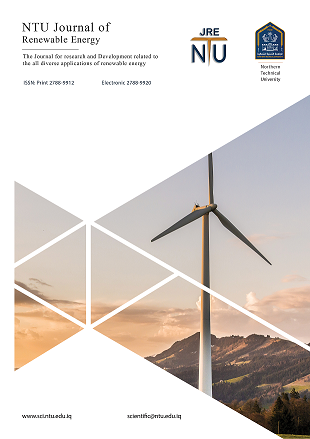Design and Programming of a Microcontroller Based on a Solar Tracking System
DOI:
https://doi.org/10.56286/ntujre.v3i1.381Keywords:
Solar Tracking System, Arduino Uno Board, Solar Cell Efficiency, Maximum Power PointAbstract
This paper is regarding the design and program of a Microcontroller Arduino Uno board using Arduino software to work as a photo-sensor (Active) Single Axis Solar Tracker System (SASTS). A solar panel, two photo-resistors which are also known as Light-Dependent Resistors (LDRs) on two sides (north/south) of the photovoltaic (PV,) and a servo motor are connected to the Uno board, which is previously running a code that is prepared by Arduino Integrated Development Environment (IDE) then it works as a tracking system. Here, the LDRs send the signal of the presence or absence of the light to the board and based on that signal the Uno reflects a new signal to the servo motor to rotate and find the light source. Lastly, the photo sensor single-axis tracker is made. While the system tries to move the panel face to the sun and change the irradiance intensity, in the meantime it starts a search to find the angle of the highest irradiance. Based on the results that are extracted from the data, the tracker system significantly boosts the output power ratio of the solar panel. Through using the Micro-controller Uno board, LDRs, servo motor, and specially designed mechanical base, the tracking system is constructed, determined from acquired data the influence of the STS on increasing the solar panel power ratio is tremendously obvious. Significantly, the tracker system rises the power ratio of the PV system. Significantly, the tracker system raises the power ratio of the PV. As a result, the tracker system remarkably boosts the output power ratio of the solar panel and increases by up to 32.18%.
Downloads
Published
Issue
Section
License
Copyright (c) 2022 NTU Journal of Renewable Energy

This work is licensed under a Creative Commons Attribution 4.0 International License.








